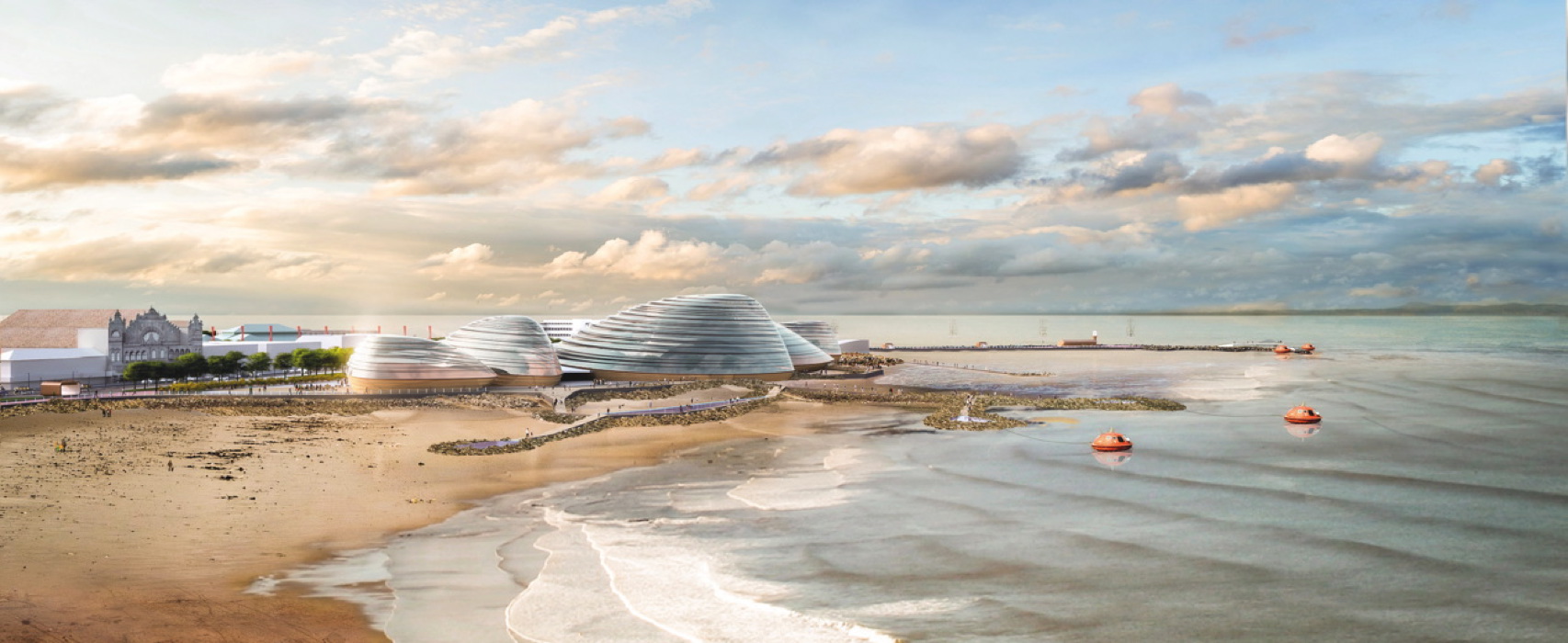Bay bags Eden Project
Plans to open major attraction on Morecambe seafront in 2023 bringing £1.5bn boost
Construction of a huge new Eden Project on Morecambe seafront at an estimated cost of £84 million has moved a step nearer. The board and trustees of Cornwall’s famous visitor attraction, boasting “the largest rainforest in captivity”, have just approved the plan after visiting the Lancashire resort.
“It is going to happen,” the head of Eden Project International Si Bellamy told Big Issue North during a break from meetings in the town. “We hope to submit our planning application in the first quarter of next year and if all goes well we would like to break ground by the end of 2020 with a view to opening in 2023.”
The proposed Eden Project North is expected to be built on a large site formerly occupied by the Bubbles swimming pool and Dome theatre. The original Eden Project near St Austell in Cornwall was constructed in a 200ft-deep crater left by more than a century of china clay extraction. After the mine closed in the 1990s the site was developed by former archaeologist and record producer Tim Smit, who famously used a pub napkin to sketch his idea of huge greenhouse-like enclosures called biomes.
When it opened in 2002 the Eden Project was described as the “eighth wonder of the world”. Besides an indoor rainforest it also features recreated landscapes from the Mediterranean, Australia, South Africa and Korea. The 20 millionth visitor was recorded in April and the local economy is said to
have been boosted by over
£2 billion.
In Morecambe, the plan is to reflect the marine environment with a design produced by Grimshaws, the original Eden Project architects. There will be five biomes looking like giant mussel shells.
“Some things are still under wraps,” Bellamy said. “However, we’ve said that people should expect wonderful plants at Eden Project North, although it won’t be a garden. They can also expect science, although it’s not going to be a laboratory, and can expect performance spaces only it won’t be a theatre.”
Central to the concept is the natural phenomenon of Morecambe Bay itself. Visitors will be able to tune into the tidal forces on which all life in the bay depends. These are driven by lunar cycles governing the twice-daily ebb and flow of seawater over 120 square miles of inter-tidal sands and mudflats.
“We’ve got this constant movement of seawater refreshing the bay with new nutrient,” Bellamy said. “So part of the scheme is a lunar observatory, which won’t be about looking at the moon but rather the rhythms of the moon and rhythms of the tide.
“People will see, when the tide flows out, what appears in its place, the creatures which pop through the mud and sand, and also what aquatic life has had to move back to feed elsewhere, and what birds come down to feed when the tide is out.”
Wearable technology such as virtual reality glasses will, he said, take visitors to places around the bay they wouldn’t normally see. “It’ll be an incredibly immersive experience, making the invisible actually visible and allowing them to hear what is normally inaudible,” promised Bellamy.
Eden Project North might be physically immersive too. One idea being looked at is the construction of a “re-imagined 21st century lido” using water from the bay.
Morecambe’s motto for visitors in the 19th century was “beauty surrounds and health abounds”, Bellamy pointed out, so fostering good mental and physical wellbeing will be a big part of it. It is hoped the scheme will revive Morecambe’s fortunes as a tourist resort by drawing 750,000 visitors annually and adding £1.5 billion to the local economy over 20 years.
The feasibility study and early planning has been paid for with £250,000 from each of Eden Project North’s partners – Lancaster City and Lancashire County Councils, Lancaster University and Lancashire Local Enterprise Partnership. A further £100,000 has been contributed by the government.
